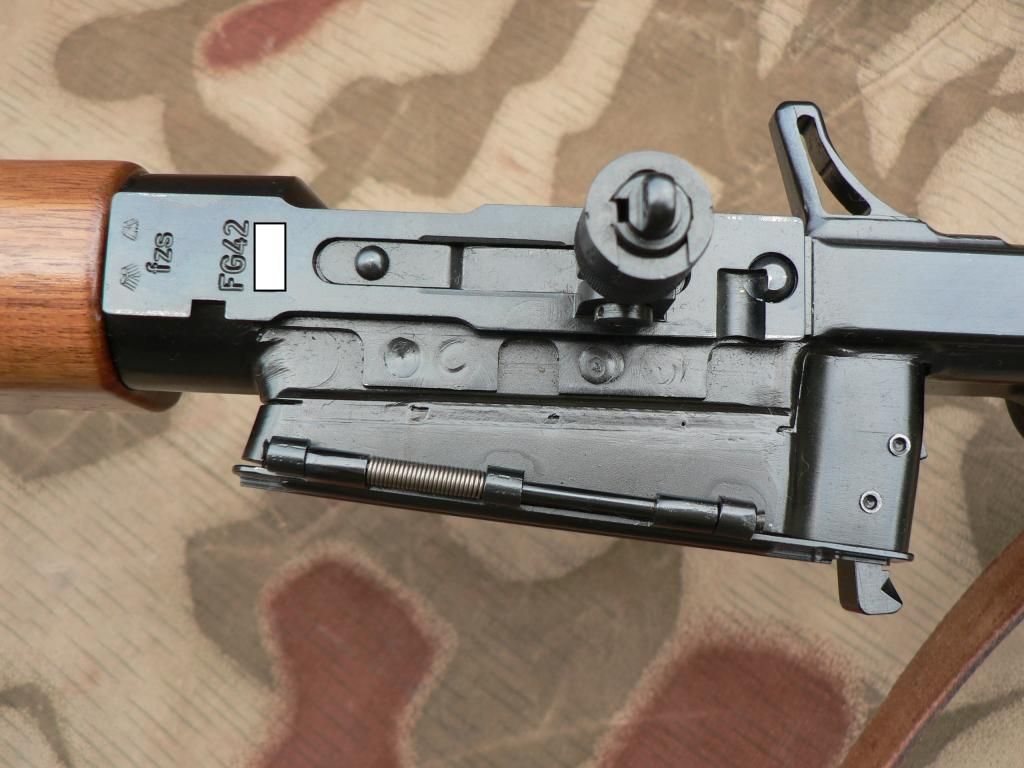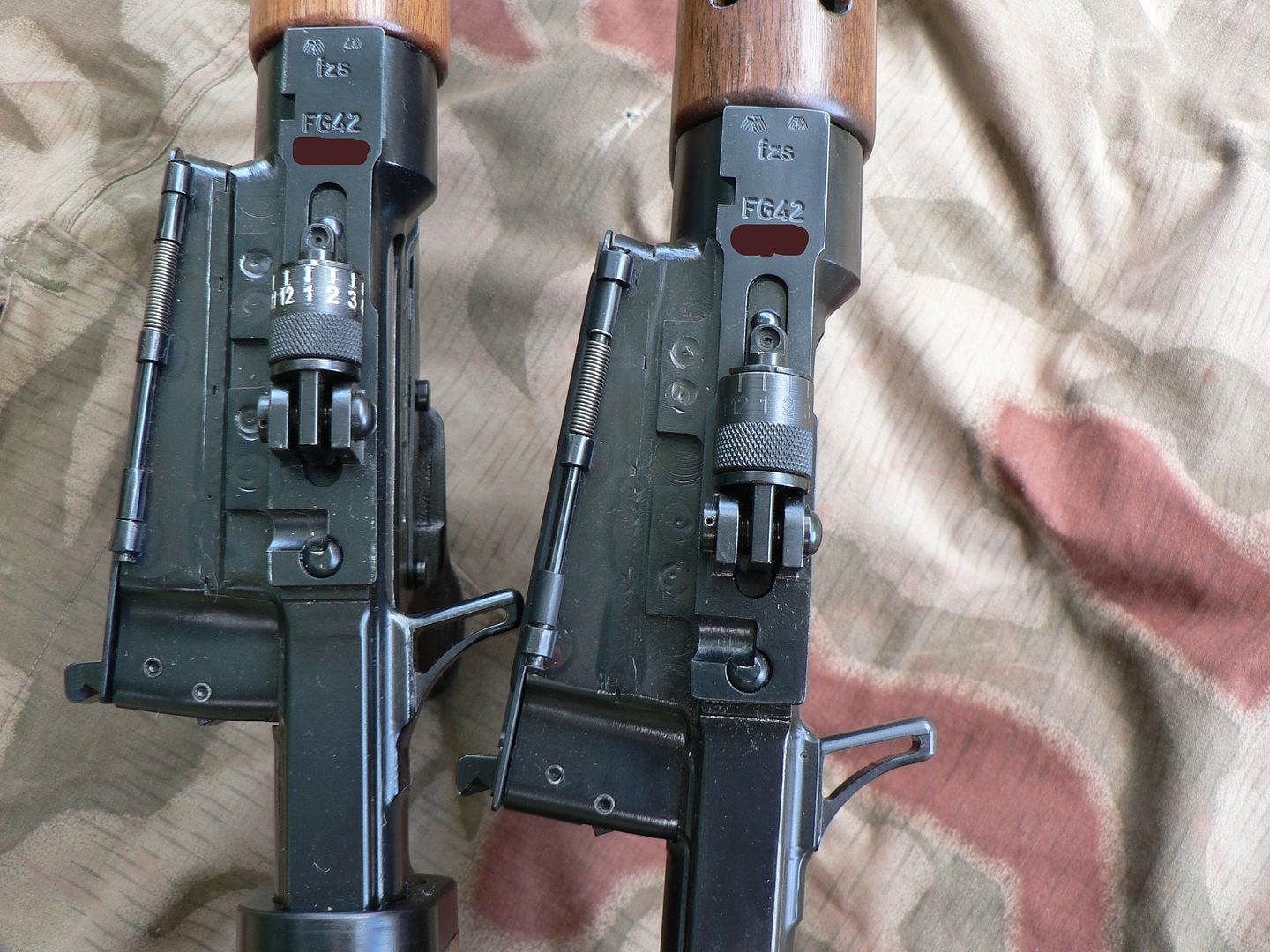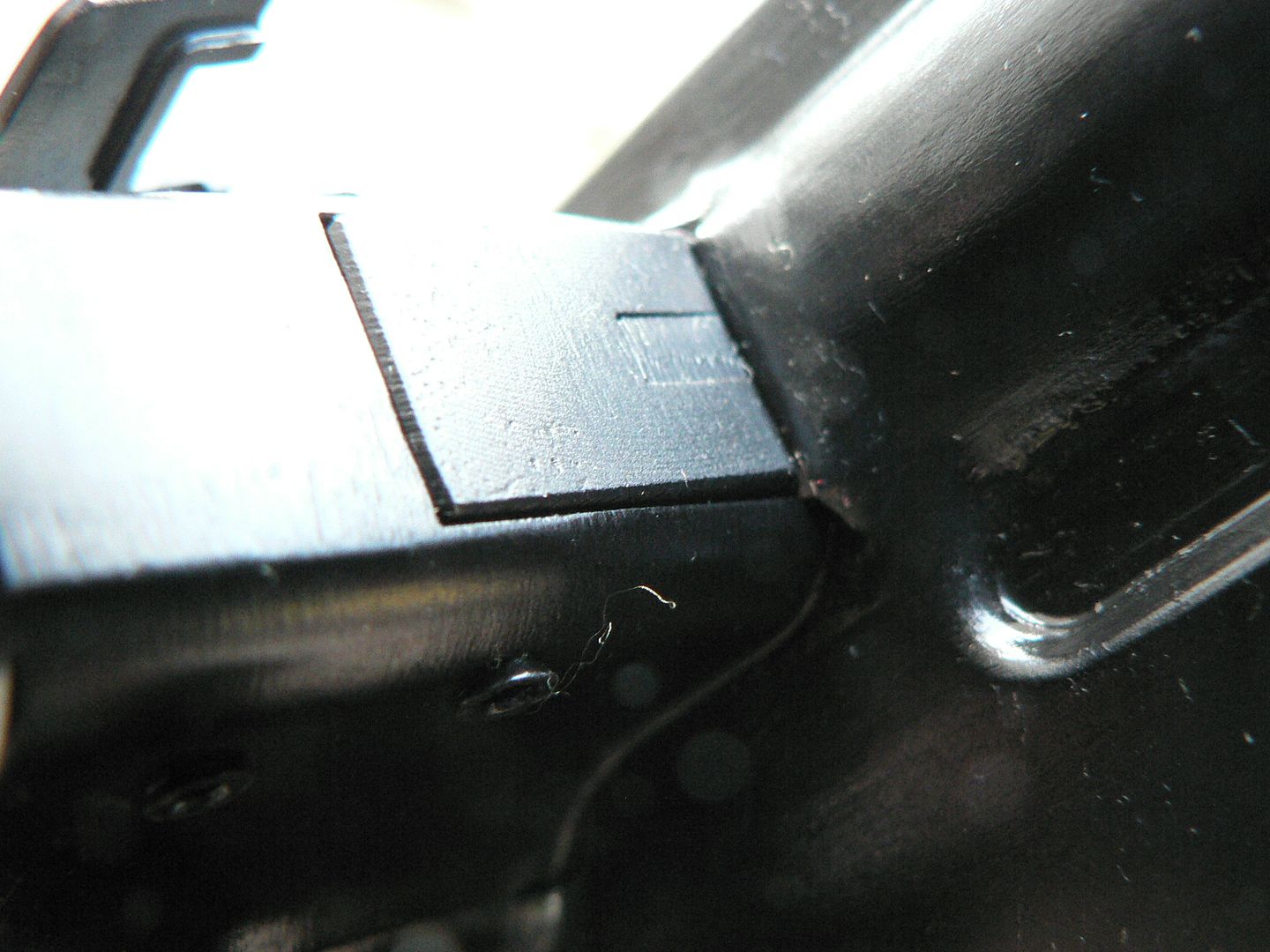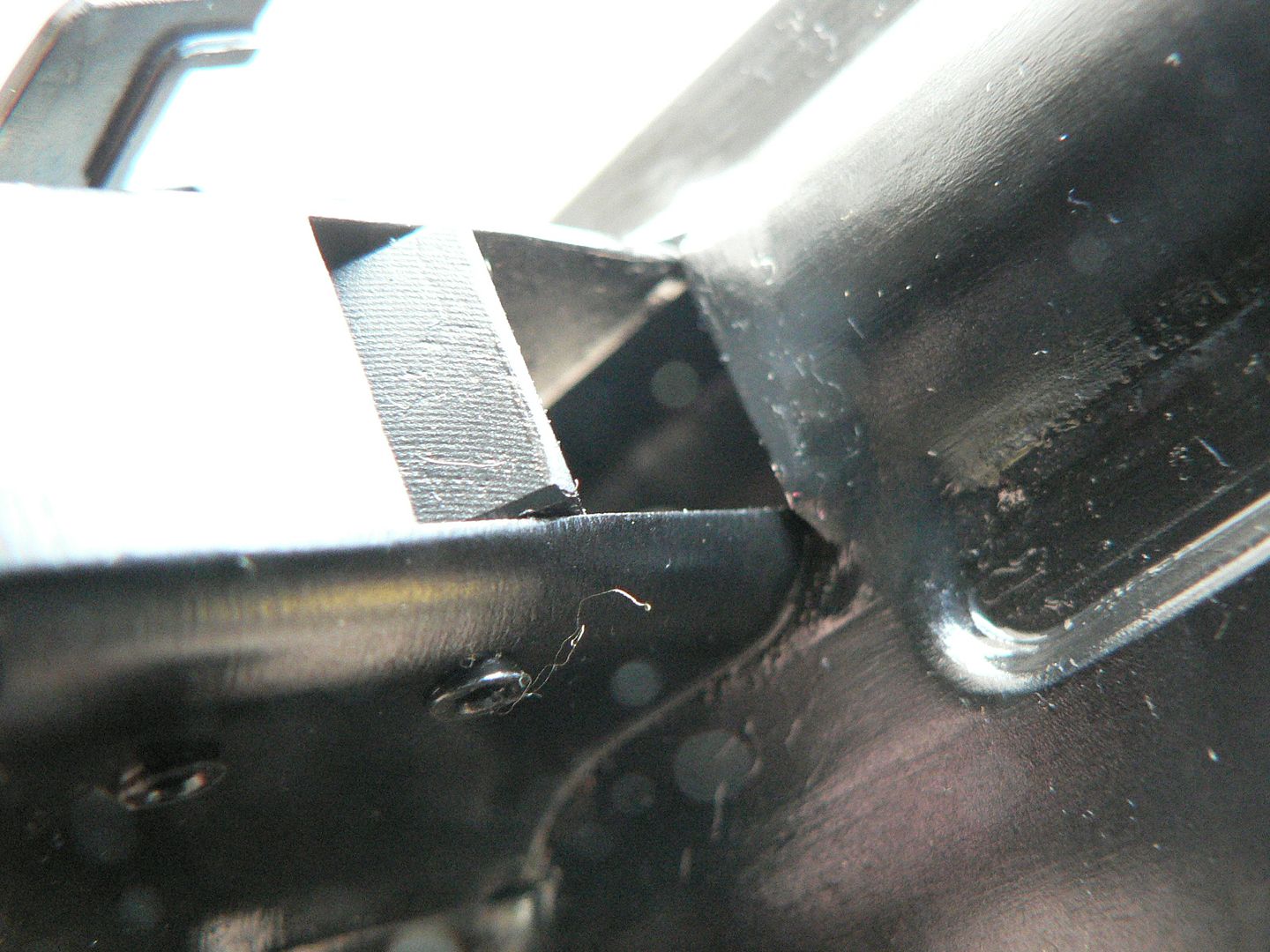We left off at the top of the receiver. So let's get a picture of that up and I'll tell you what I know about it and what I don't know too.

Front is to the left and the magazine well is at the bottom of the picture. All the way at the front of the rear sight plate are two stylized eagles. On original rifles, these were the Luftwaffe acceptance stamps. They were put there to show that the rifle had been inspected and accepted for service by the Luftwaffe. Unlike typical German firearms that are covered with acceptance stamps on almost every single part, the FG 42 was almost devoid of markings other than those seen on the rear sight plate. On the SMG FG42, those stamps are put on there just for the fun of it. You simply CAN NOT have a rifle, whether it be German or a copy thereof, without an eagle somewhere! Behind the "acceptance" stamps, are the pantographed letters "fzs". During the war, that was the manufacturing code for Kreighoff. Again, they are put on this rifle for historical purposes. If you prefer, you can have "SMG" placed in this area which, of course, would be more accurate. Moving rearward, we see the front rivet that holds the plate to the top of the receiver and holds the leaf spring for the sight in place too. Then we have the rear sight in the deployed position. Behind that is the rear rivet. Just in front of the rivet is a dished out area which actually cuts away part of the rivet. This is used to position the optics in the proper place for eye relief and to keep them from moving forward during recoil. It is engaged by a cam on the tensioning axle of the rear scope ring. We'll look at all of that later when we get to the optics. To the immediate left of the sight plate are a couple of tabs, each of which has two spot welds. The purpose of these tabs is unknown to me. Whether they are part of the sight plate and are used to help hold it in place or were put there simply to mimic the look of an original rifle I do not know. What I do know is that the welds are real as is evidenced by the fact that they look different on different rifles as seen here:

It's hard to tell exactly what's going on where the various parts meet because the joints are so well executed (that's a good thing). Whatever the case, I assume that they do serve some purpose and are not purely cosmetic.
Let's get back to the first picture:

The magazine well is a separate machined part that is welded to the receiver all the way around and on the inside too. It is "L" shaped with the base of the "L" towards the rear. If you look closely, you can see the weld line. The base of the "L" has two pins in it. The outboard and forward pin holds the magazine catch in place while the inboard rear pin holds the ejector in place. Both are mounted inside the magazine well so we can't see them here of course. Between the magazine catch and the ejector is a spring. It serves two purposes. First, it acts as the tensioner for the magazine catch. Second, it acts as the tensioner for the ejector which rotates out of the way when the bolt moves forward and snaps back into position as the bolt travels rearward so that it can eject the empty casing. We can see the back of the ejector if we look at the back of the magazine well.
Here, the bolt is to the rear and the ejector is in position ready to eject a casing:

Here, the bolt is forward and the ejector is rotated out of the way:

Note: In the above picture, the bolt has been removed and I have swung the ejector further than it would normally go in order illustrate its movement.
And back to the first picture again:

At the bottom of the picture on the edge of the magazine well is a long pin with a spring coiled around part of it. This pin is the axle for the magazine well upper cover door which is shown closed. There is a lower door too. When the magazine catch (seen poking out of the magazine well in the lower right of the picture) is pressed forward, the coil spring snaps the door open so that a magazine can be inserted. These doors were not present on the first model FG42 and were added to the second model after field tests found that an empty and uncovered magazine well was a great place for dirt to get into the action and render the rifle useless.
That's it for the moment. In the next post, we'll move around to the left side of the receiver and get a closer look at the magazine well and it's doors. As always, thanks for your time!